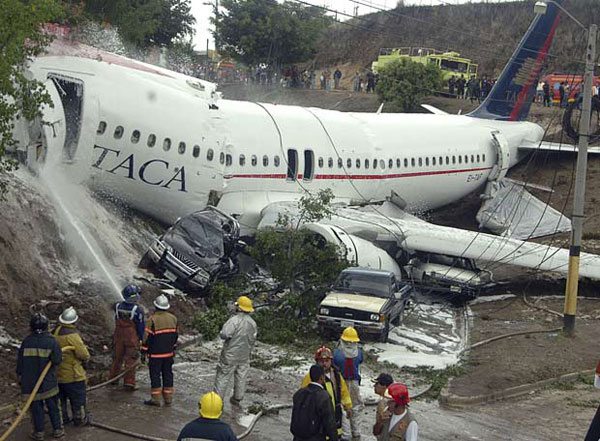Rear seat is safer when the plane falls
Aviation experts have just tried a crash on a Boeing 727 passenger plane, to find out what happens when the plane crashes to the ground.
The test of this $ 1.6 billion controlled plane took place in a remote place in the Sonoran desert in Mexico.
After the pilot parachuted out of the plane at an altitude of about 762 meters, the aircraft would be sent by another pilot to the ground with a remote control device.
On the plane are three dummies used to test bumps that are extremely sophisticatedly designed to move like humans.

Sitting in the back will have a higher chance of surviving when a plane crash occurs.
After the plane landed in the fore nose, the experts found that the mannequin in his posture of bending and fastening his seat could escape the impact, the mannequin bent but did not tighten the string, was seriously injured. important at the beginning, while the third effigy, not doing anything to protect, will surely die.
This project aims to recreate a catastrophic but still life-threatening accident that allows scientists to study the collision resistance of aircraft frames and chambers, as well as bumps on the human body.
Experts predict that 78% of passengers on the plane will survive if the plane dives down first, but all passengers in the first class cabin will not be able to escape because the front body of the plane is cut off.
This is the second time a plane carrying people has been put into a crash simulation test. The Boeing 720 participated in the first NASA-conducted test that exploded like a fireball in 1984.
AnneEvans, a former investigator working at the Flight Accident Investigation Bureau in the UK, analyzed the black box of a Boeing aircraft that has just been tested.
The analytical results show that today's passenger planes, which are far more sophisticated than the Boeing 727 tested, are very well equipped to cope with these falling situations.
Ms. Evans said that sitting behind the place where flying data recording devices are located will be safer than the front because the front part of the aircraft often suffers from stronger impact.
- The reason the aircraft seat does not turn backwards is safer
- Sitting on the plane where the safest?
- The reason you should choose the seat close to the window on the plane
- Read the personality by choosing a seat on the plane
- Why does the car seatbelt have shoulder protection that the plane does not?
- Body reaction when the plane falls and how to
- The probability of an aircraft having an accident is 0.00001%
- This is the most dangerous sitting position when you are on a car
- If the plane falls into the sea, how do passengers survive?
- Find the black box of Lion Air plane falling into the Indonesian sea
- Indonesia found the fuselage crashed, possibly a black box
- 10 most exotic waterfalls in the world
 'Fine laughs' - Scary and painful torture in ancient times
'Fine laughs' - Scary and painful torture in ancient times The sequence of numbers 142857 of the Egyptian pyramids is known as the strangest number in the world - Why?
The sequence of numbers 142857 of the Egyptian pyramids is known as the strangest number in the world - Why? History of the iron
History of the iron What is alum?
What is alum?